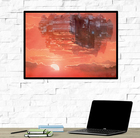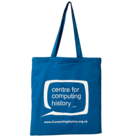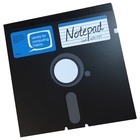|
This article was contributed by Philip Gardiner. * Using the Psion Organizer 1992 to 2004 The first Psion I had was a 4 line Psionll in 1992, now long gone, it was about 15cm tall, by 7cm wide and 2cm deep. It came complete with a hard plastic case which it slid in and out of. I worked for a company building a national radio data system and it just had enough memory to hold the name, grid reference, address and transit and receive frequencies of all our 130 radio sites. This was very useful when we needed to test something and we were 50m or so above the ground near the antenna! The data was stored on an EPROM which was erased by putting it into a box with a bright ultra-violet light, provided as an accessory by Psion. This was replaced by a Psion 3a, which was probably the first really useable PDA; complete with diary, database and its own programming language Organizer Programming Language (OPL) which allowed users to write their own applications. I wrote several myself, including one for calculating the speed of a train over a measured quarter mile and one for calculating the runs required to win a one day cricket match. These were slowly updated and ported onto all my later Psions. The 3 series, with a proper 'qwerty' keyboard, could be used for writing documents and spreadsheets and also provides a contact database, a notes facility and a world clock with multiple alarms. Panels underneath can be slid open to plug in software written and stored on external memory devices and software could also be downloaded from the web and installed on the main device. The company I worked for was merged into Orange, where I became responsible for planning some of the cellular phone radio sites. The Psion 3 was used pretty much like any PDA for work, but also used to keep records of my photographs (my hobby) and the cricket and train applications. The lack of memory in the 3a prompted an upgrade to the ultimate version of the 3 series, the 3MX. This was a very nice machine to use with a solid professional feel to it. The 3MX was only replaced by the Revo as the latter machine came with a permanent desk cradle, which plugged into a PC and allowed easy synchronisation between PC and PDA. It was possible to do this with the MX but far more fiddly. I bought the Revo in 1999 at Schipol Airport, Amsterdam from Duty Free when a plane I was waiting for was rather late. The Revo was also smaller and lighter with a better keyboard than the 3 series, but it didn't match the 3MX for build quality. All versions of the 3 ran on AA batteries, with a small button cell inside to hold the memory when the batteries were replaced. This was very convenient as AA's are available everywhere so there was never any problem getting new ones and battery life was good. The Revo had an inbuilt rechargeable battery, so when the battery got low it had to be charged from the mains. Not always so easy when you are travelling around the world. After leaving Orange, I joined a company that planned cellular systems all over the world and my trusty Psion followed me to Korea, Hong Kong, Pakistan, Brazil and all over Europe. I purchased the fax and datalink as accessories and although they worked reasonably well, I found they were just too awkward to use on a regular basis. I now had a laptop as well and this was used for most of my communication requirements and accompanied me between hotel room and office. The Psion still went everywhere with me and formed my main diary and a very useful alarm clock. I only stopped using Psions when the Psion decided to abandon the PDA market and concentrate on smart phones, meaning compatibility became an issue between emerging PC software and Psion software. I have since used a Fujitsu/Siemens Loox for a few years which runs Windows Mobile, but have recently bought a Nokia E71 Smartphone. Psion became Symbian when it started concentrating on operating systems and they were eventually bought by Nokia, so in effect, I'm back with a Psion again. By Phillip Gardiner This exhibit has a reference ID of CH3491. Please quote this reference ID in any communication with the Centre for Computing History. |
|























